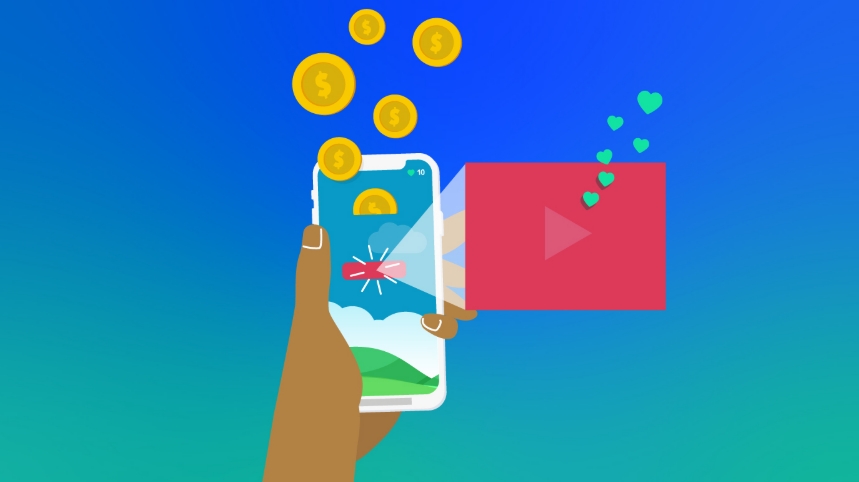IAA & IAP Monetization: 7 Burning Questions Developers Ask in 2025

In 2025, mobile game monetization is more complex—and more lucrative—than ever. With the global mobile gaming industry projected to surpass $200 billion in annual revenue, developers face a critical choice: should they focus on In-App Advertising (IAA), In-App Purchasing (IAP), or a hybrid model?
The right monetization strategy can dramatically influence mobile game revenue, player retention, and long-term profitability. However, the wrong approach can frustrate users, undercut engagement, or even draw regulatory scrutiny over privacy and data protection.
In this guide, we’ll tackle seven burning questions developers are asking about monetization strategies for mobile games in 2025—covering fundamentals, regional differences, practical tactics, and common pitfalls to avoid.

1. What’s the Difference Between IAA and IAP, and Which Should I Choose?
In-App Advertising (IAA) involves generating revenue by showing ads—such as rewarded video ads, interstitials, banners, and native ads—within your game. In-App Purchasing (IAP) focuses on selling digital goods, upgrades, or premium content directly to players.
Key considerations:
· IAA advantages: Low barrier to user spending; monetizes non-paying users; predictable CPM-based revenue.
· IAP advantages: Higher lifetime value (LTV) per paying user; fosters deep engagement; more control over pricing.
· Hybrid approach: Many top-grossing titles in 2025 blend both, leveraging IAA for broad monetization and IAP for whales and engaged players.
Expert tip: Choose based on your game genre, target audience’s spending behavior, and player lifecycle. Hyper-casual titles often lean on IAA, while RPG and strategy games thrive with IAP.
2. How Do Global Regional Differences Affect Monetization?
Monetization success isn’t one-size-fits-all—regional preferences matter more than ever in 2025.
· North America & Western Europe: Higher average revenue per paying user (ARPPU), strong IAP adoption, but increasing demand for non-intrusive mobile advertising formats.
· Asia-Pacific (Japan, South Korea, China): IAP-heavy markets with competitive in-game economies; players are accustomed to spending for cosmetic and progression boosts.
· Latin America, Middle East, Southeast Asia: Growing mobile gaming markets with lower average spending but high engagement—IAA can capture value from a broad base.
Action step: Localize not only your content but also your monetization strategies for mobile games. For example, adjust ad frequency in ad-sensitive regions and price IAP items to match local purchasing power.
3. How Can I Balance Monetization and Player Experience?
A common mistake in 2025 is overloading players with ads or paywalls too early—this drives churn and damages reviews.
Best practices:
· Introduce monetization after onboarding to establish trust.
· Use rewarded ads as a positive engagement tool rather than forced interruptions.
· Limit intrusive formats like full-screen interstitials during core gameplay loops.
Example: In casual puzzle games, placing rewarded ads after a level completion feels natural, while mid-level interruptions hurt retention.
Remember: sustainable mobile advertising enhances player value—it doesn’t just extract it.
4. How Do I Maximize IAA Revenue Without Hurting Retention?
The challenge with IAA is striking the right balance between ad frequency and user satisfaction.
Strategies to increase IAA revenue:
· Segmentation: Show more ads to less-engaged users who are unlikely to convert to IAP, while reducing ad load for paying users.
· Ad format mix: Rewarded video ads often outperform banners in engagement and eCPM.
· A/B testing: Continuously test placements, timing, and formats to find the sweet spot for your audience.
Pro insight: High eCPM regions (e.g., US, Japan) can yield significant returns even with moderate ad impressions—prioritize quality over quantity.
5. How Can I Increase IAP Revenue in 2025?
If IAP is your main driver, focus on player motivation and perceived value.
Tactics to boost IAP:
· Tiered pricing: Offer low-cost entry items for new spenders and premium bundles for whales.
· Limited-time offers: Create urgency without feeling manipulative.
· Live ops events: Regularly introduce time-limited content tied to in-game activities.
· Personalization: Tailor offers based on player behavior data.
Example: A strategy game could offer a $1.99 starter pack for new players and a $49.99 resource bundle for top-tier spenders.
The more your IAP items feel essential to progression or unique in appearance, the higher your Mobile game revenue potential.
6. How Do I Protect User Privacy While Monetizing Effectively?
In 2025, privacy regulations like GDPR, CCPA, and Apple’s ATT framework are stricter than ever. Mishandling user data can lead to fines, app store removal, and reputational damage.
Privacy-friendly monetization tips:
· Use contextual targeting for ads when consent isn’t granted.
· Work with mobile advertising partners who comply with global privacy standards.
· Be transparent in your privacy policy about data collection and usage.
Player trust is a long-term asset—don’t sacrifice it for short-term gains.
7. What Are the Biggest Monetization Pitfalls to Avoid?
Even seasoned developers can stumble in 2025. Common mistakes include:
· Over-reliance on one revenue stream without diversification.
· Ignoring early player feedback on monetization features.
· Copy-pasting monetization models without adapting to game mechanics.
Failing to track ROI and LTV across different user segments.
Pro takeaway: Treat monetization as an evolving system. Regularly review analytics, adjust strategies, and respond to market shifts.
In 2025, In-App Advertising (IAA) and In-App Purchasing (IAP) remain the twin pillars of mobile game monetization. The most successful developers aren’t choosing one over the other blindly—they’re creating hybrid systems tailored to player behavior, market trends, and regional preferences.
Whether your goal is to increase IAP revenue, optimize ad yields, or build a sustainable mobile game revenue model, the key is balance: prioritize player experience, respect privacy, and continually refine your approach.
By understanding the nuances of IAA and IAP, applying targeted strategies, and avoiding common pitfalls, you can unlock your game’s full earning potential in 2025 and beyond.









